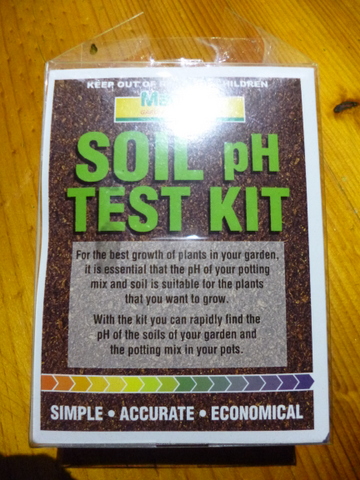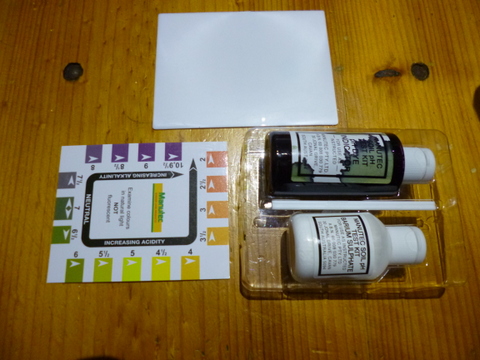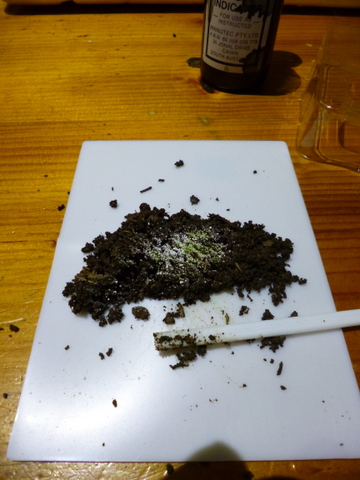Given that pH can have a marked effect on what we are trying to grow, the next step is to measure it and see what the pH of or particular soil is so any problems can be corrected. There are two main methods of measuring pH, electronically and chemically.
Electronically
This requires buying a small pH meter consisting of a probe which is inserted into the soil to be tested and the dial or meter which shows the pH reading. The two parts may be connected by a flexible wire or rigid tube so that the entire meter is an integral unit. The procedure for use is very simple: push the probe into the soil a few centimetres and then the reading can be taken directly from the meter a minute or two later. The important considerations are the soil be wet, or at leas damp, and enough readings are taken over the entire planting area so that an accurate picture of the whole area can be gained.. The pH of the soil will vary over a given area so don’t just check the south-eastern corner of your 500 square metre veggie patch and say “looks OK here, she’ll be apples!” and leave it at that. Take readings at regular spacings to be sure.
The advantage of the meters is that they are reasonably cheap and once you have paid for it there is nothing else to buy, not even batteries. However, the manufacturers assurances notwithstanding, I am still not convinced they are as accurate as the second method.
Chemical or “Wet” Method
This involves buying a test kit containing a dye which changes colour with pH (called a universal indicator), a contrast medium which is a white powder that makes the colour change stand out and a colour chart to translate the colour change into a pH reading. There are several kits available, with one you mix the soil to be tested with water to form a paste then sprinkle on the white powder followed by the universal indicator and compare the resulting colour with the colour chart to read off the pH. With another the soil is diluted in water, the solids filtered out and the universal indicator added directly to the solution; the colour of the solution is read against the colour chart to find out the pH.
The test kits are more expensive than the meters but they contain enough chemicals to do many tests and in my experience are more accurate. Both the meters and the chemical test kits are available from hardware stores and plant nurseries.






